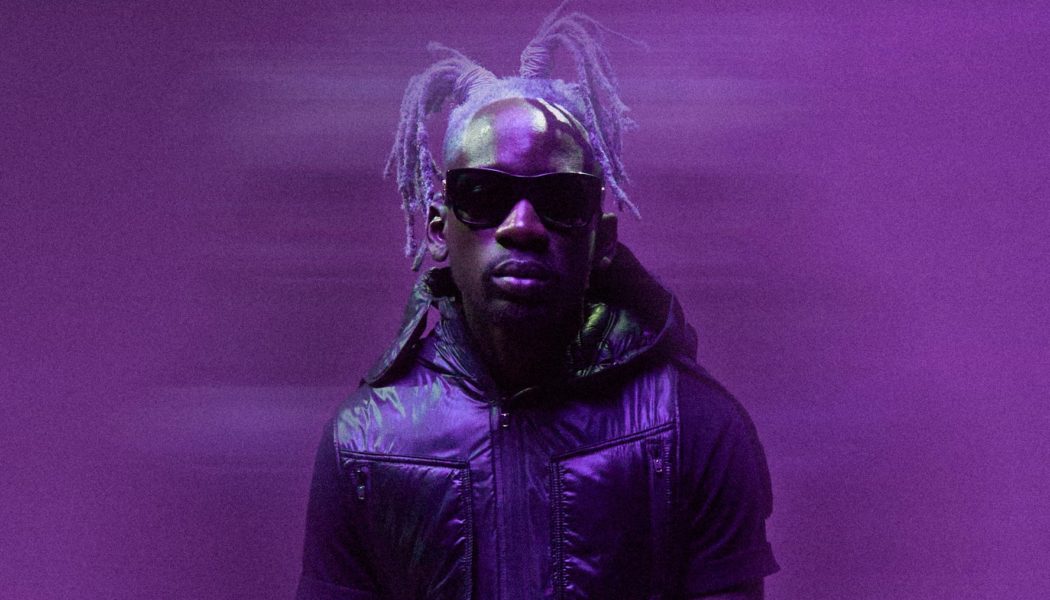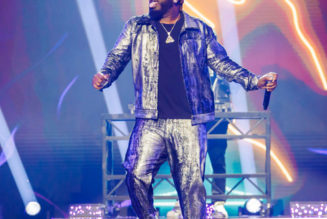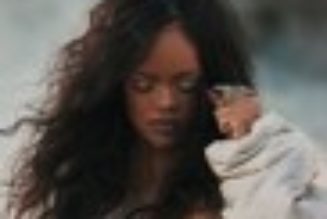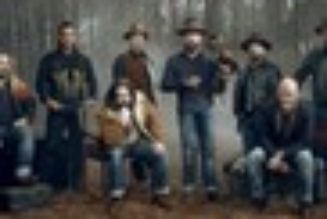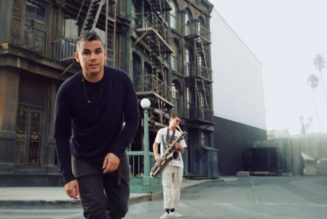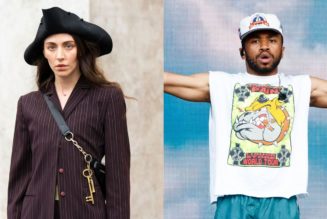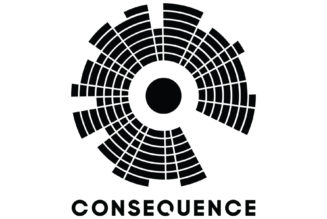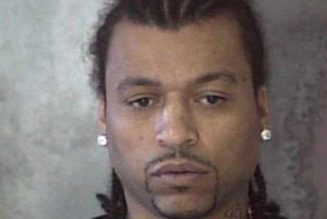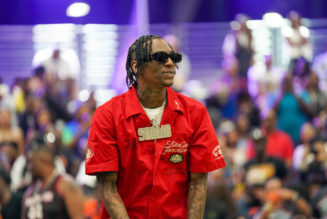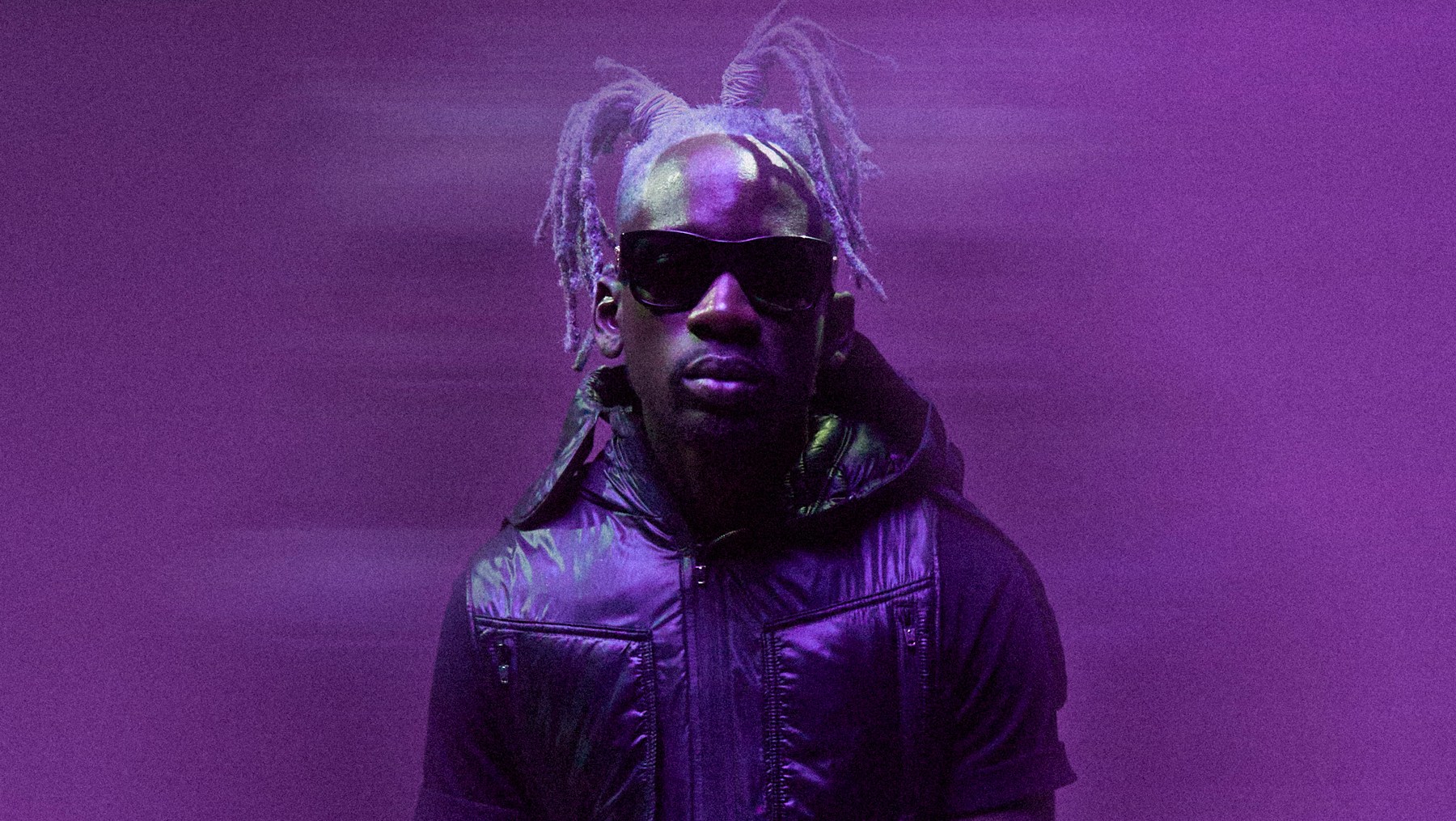
Though Mr Eazi has released five bodies of work and several smash Afrobeats singles over the past 10 years, he’s crowning The Evil Genius, out Oct. 27, his debut album. “I don’t like to use the word album loosely,” he says, and he’s pulled out all the stops for this one, including commissioning 16 pieces of physical, visual art, one for each of the tracks. In late 2020 Accra, Ghana, where Eazi, a Nigerian, has made a home since he was 15, he started to become enthralled with the fine arts after visiting a friend’s museum. His album process began just a few months later, though Eazi was actually thinking of giving up music and focusing on growing businesses in Africa. One of them is emPawa Africa, a label and publishing company who bolstered Nigerian acts Joeboy and DJ Neptune and partners with South African Amapiano sensations Major League Djz.
However, Kel-P, the producer behind some of the best of Burna Boy’s African Giant and Adekunle Gold’s Tequila Ever After successfully encouraged him to get back in the booth. Mr Eazi drew inspiration from the disparate corners of the continent he was visiting, and subsequently, the rigorous and excellent album was recorded across Ouidah and Cotonou, Benin; Kigali, Rwanda; Accra and Kokrobite, Ghana and Lagos, Nigeria (he also made music in London, Los Angeles, and New York City). The music video for the the first single from The Evil Genius, “Chop Time, No Friend,” was shot in Dakar, Senegal. Similarly, the 13 artists Eazi commissioned to make works inspired by the album represent eight African countries.
“I was traveling across Africa and really putting my head into embracing myself as an entrepreneur — I was playing a lot of Jay-Z, looking towards artists who have embraced [that] gift,” Mr Eazi tells Rolling Stone. He saw that the creativity of a businessman and an artist could be pretty similar. “I started going from ‘OK, I don’t want to record music anymore’ to being…for instance, in Kigali and trying to set up one of my businesses, spending days and days having meetings. It’s meetings from 7 a.m. till 10 p.m. My brain would be so fried from having all these highly intellectual, strategic conversations that I would just go to the studio.”
Here, Mr Eazi goes deep on embracing creativity as an art collector, working to let artists feel free as label head, bridging reggaetón and Afrobeats, and what happened after he demanded Bad Bunny give his artist proper credit for contribution to his smash Un Verano Sin Ti.
You mentioned playing Jay-Z traveling around Africa — which is just, firstly, a really cool thing to have been able to do — but Jay-Z also is a prominent fine-art enthusiast. What’s your relationship to fine arts?
I remember watching Jay-Z’s “Picasso Baby” and [saying], “Yo, what is this? Who’s this person?” Years later, I would sit at the table with Marina Abramović [the performance artist featured and referenced in Jay-Z’s video for “Picasso Baby”] and I would get into her work. When I watched the video, I didn’t know what was going on, but watching performance art in that way was really striking to me, seeing how people interact with her work.
In December 2020, I went to see a friend, Joseph Awuah-Darko, who has a museum in Accra. He had invited me. I basically went to see this artist he had found, and the artist was in residency just creating. After some time, he would have his art shown. What he was creating was really beautiful. I was chatting with the artist and chatting with Joseph and he was telling me the process — I was like, Wait a minute, this is like music. Sometimes, I go into the studio not knowing what I will create, the same way the artist can go into the studio not knowing what they will create.
The canvas or the medium is just like the instrumental. I just started to see these similarities and also really see the African soft power in the way our culture is redefining our identity. We’re owning it without needing to dumb it down or really needing to Westernize it in its rawest form as it is to us.
I collected two pieces from the artist. That was the first time I was actually going out of my way to start collecting. And with me, how my brain works, it’s so hard to get me onto something, but once I’m interested in something, I just go deep. I started to follow the artist’s career and just see how the artist months later was showing across the world and his value increasing and what that was doing to him: economic freedom, creative freedom. And that’s the same thing music has done for me and every artist I’ve worked with.
I was getting more and more exposed to different artists and different art forms to the point where I said, “You know what, this is going to connect.” Seeing how personal this album was, I wanted to be able to capture those emotions and bring people on the journey with me, even visually. It was an experiment to me also to be able to play the music for the artists and get them to create based on how they felt when listening to the song. Seeing the exact same feeling visually on the canvas was just the most beautiful thing, period. It even made the whole process more interesting to me because it wasn’t just about going to the studio and making music, it was sort of making an exhibition and audiovisual multisensory experience with the album.
Was it expensive to commission all of these pieces?
To be honest, I can’t even tell you how much I spent on the project. That’s a good question. I need to, maybe after this call, go look at how much was spent. But it wasn’t really about the dollars and the pounds, it was more about seeing it happen. At first, I wanted to work with 16 different artists, and I wanted to fly all the artists to one place and spend two weeks with them listening to all the songs and chit-chatting with them, and another two weeks of them creating. And I started to see how that was logistically almost impossible.
When you have an idea, it’s almost like insanity; you forget everything that makes sense and you just focus on the idea until you see the idea happening. That’s why I love creatives. I’ve heard of creatives who had ideas and just got so obsessed with seeing the idea happen that they ran out of money. It’s a shame. The reality of our world is that you need resources to get ideas to happen. But I think I was fortunate in the sense that I was able to not have those constraints. I basically just go on there and just get the idea together. I’ve still not even gone back to look and see, “OK, how much did this cost me?” Because it is more sentimental than anything.
You’re not signed to anyone else’s label, are you?
No. Never been signed.
I feel people are learning so much about how label deals can essentially be loans. I don’t know if you’ve heard Mahalia talking about how she’s been signed since she was 13 and claiming that she hasn’t made any money off of her music directly, ’cause she essentially just has a series of loans.
Yeah, I think it is just, back in the day, even with arts, for most of the art that we celebrate, there were always patrons just funding and creating the resources for all these things, some of the most beautiful works we’ve seen. It’s unfortunate, but in the real world, ideas are funded by money, whether we like it or not. Resources have to go in. And it is so hard to match the business and creativity. How do you place a value on [an] album?
I’ve just been lucky, to be honest, so far my career hasn’t been … I’ve had the economic freedom to do exactly what I want, when I want, and how I want. But it’s not going to be that same journey for everyone because you need money to get everything done. You need to shoot a video, that’s going to cost money. You need to do a PR campaign. Everybody has bills. So, as much as a lot of record deals can be better, the fact is the money’s coming from somewhere. And if people are investing, then they need to make the money back for it to continue.
And so, having that understanding, that’s what’s kept me independent because I can’t imagine if I was signed to a record label or I didn’t own my record label and I said, “You know what? I don’t want a budget. I just want to travel for two years.”
I feel like with the artists, that’s why it’s important to me: I feel the best way to support somebody is not necessarily by giving them handouts, but actually investing in what they’re doing.
How does that inform the way that you run your label? Do you give advances or is it more like if you give an artist an advance, you help them determine how to spend it in a way that’s productive for you and will make money back? It’s not just like the artist has the money and can spend it however they want? And it would also not be a ton of money that you are not 100 percent sure the artist can make back?
It’s still risky because when I signed Joeboy, there wasn’t really anything to place how much I thought the value would be. I just came to that value based on how much I knew it cost me to put out my own music. And, yes, you’re right in the sense where with emPawa, which is my label, we don’t just give artists tons of money. It’s more realistic.
It’s more, “OK, what is the plan? We’re going to be in business for X number of years. We want to put out two albums. How much does it cost to create the album? How much does the marketing campaign cost? How much do the videos cost?” And then my artists always have the final say in approving the invoices. So it’s not like you’re going to wake up and just hear “You owe $2 million.”
That has its positives and its negatives because there’s been times where we’ve had a campaign going crazy in the U.S. and it costs an extra $300,000 to take it to radio, and I’m ready to spend the money but maybe the artist is not ready to take that risk because it’s a lot of money. Then, we don’t end up doing that kind of campaign. So in those kinds of times I’m like, OK, this is why the label ends up just making the call because at the end of the day, it works out. If it works well, it works out for everybody, but at the end of the day, I just still want freedom. I want the artist to feel like they’re in control. So I mean, in the end, as long as you are happy and as long as it still makes business sense for me, we go on. That’s been what has guided every deal I’ve made.
Your press materials for The Evil Genius describe Afropop and Afrobeats as two genres included across it. I’m wondering what are the distinctions particularly to you between Afropop and Afrobeats?
I think it’s just basically what people have decided to call it. That name [Afrobeats] wasn’t … I don’t think there was anybody in Nigeria saying [it] at the time, when 2Face was making his music. It’s more like an umbrella word for African beats. I think it is even unfair to even put everything [in] Afropop. Korean pop is pop music from Korea. We’re not calling it “Asia pop.” You feel me? There’s Nigerian pop, there’s Nigerian dance music, there’s Nigerian R&B, and the only reason I would even call it pop is because it’s a blend of different influences. I think the best way is to ask the artist, “What is this you’re making?”
If you ask a lot of Tanzanian artists what they’re making, they won’t tell you it’s Afrobeats. They’ll tell you they’re making bongo flavor. Or if you go to Ivory Coast, they might tell you they’re making coupé-décalé. So you calling coupé-décalé Afropop is wrong.
The other day, I was in Barcelona performing. I performed my song with J Balvin and Bad Bunny [“Como Un Bebé”] and everybody was singing it. That was the first time I was performing it at that scale. And it just hits me that that was the first Afrobeats Spanish record, but nobody ever calls that song Afrobeats. What makes it Afrobeats? Is it because it’s someone from Africa singing it?
That’s the first ever Spanish Afropop record. And it had J Balvin and Bad Bunny on it. But even me, I only realized that “Wait a minute, this is not Reggaetón. I made that record — we made that record in my bedroom, and I wrote 90 percent of the melodies for that.”
We reported on your call-out of Bad Bunny’s label for using Joeboy’s song on his very popular album without credit. That label came back and denied any wrongdoing. How is that going now? Where is that conflict now?
I think that has been handled very positively between the lawyers, between emPawa lawyers and Bad Bunny lawyers, especially on the publishing side, which was one of the things that I flagged. Things are being rectified. I need to check on that. What I just did at the time was just call it out and get the lawyers to rectify the situation. I’ve literally not even gone back to see. But I asked the guy who runs emPawa Publishing the other day, and I was like, “Hey, whatever happened to that?” And he was like, “Yeah, everything’s going on smoothly.” I think it should be almost done soon. And so the next time I will speak about it will be when everything has been rectified.
I think it was important to do that call out. It was important on our side to make those creators happy, to make Joeboy and the producer feel like, there was somebody that could speak for them, to basically let everybody know that you have to do things the right way. It was also a learning process on our side as well.
As you can see, Selena [Gomez] is on the Rema record and the record is a global smash. There will be more Nigerian, Ghanaian, Ugandan, Tanzanian, global-smash hit records. And hopefully, things will be done the right way. And the more people call out and fight for things to be done right, the more it’ll become more standard.
